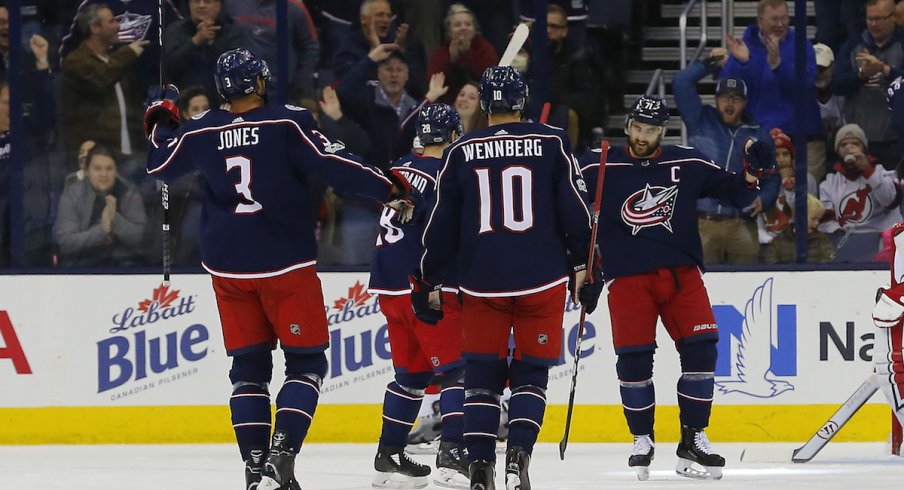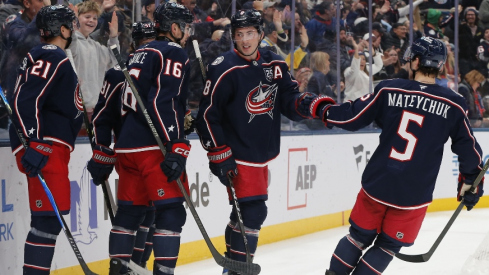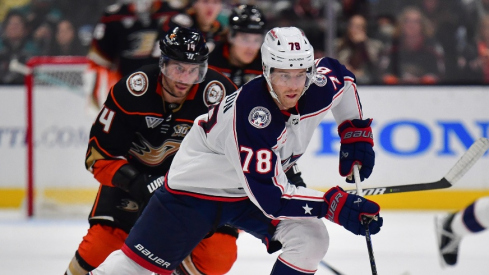Stop me if you've heard this before, but the Columbus Blue Jackets power play is bad.
Head coach John Tortorella doesn't want to talk about it, but everyone knows it: The Jackets' power play is the Achilles heel of an otherwise solid team.
Miraculously, the Blue Jackets are scoring on just 8.64% of their power plays, yet still find themselves 17-10-1 and within reach of the top seed in the vaunted Metropolitan Division. Let that sink in.
They have scored on just seven of 81 opportunities. Just hitting the NHL average (around 19%) would give the Jackets eight more goals, and quite assuredly more points in the standings.
Statistically speaking, it's the worst in the history of the NHL during most of these players' lifetimes.
No, really. Since 1987-88, only the 1997-98 Tampa Bay Lightning (9.34%) and 2000-01 Minnesota Wild (9.62%) had a power play conversion rate under 10%. To give some context, that Lightning team finished the season with a 17-55-10 record, good for 44 points.
This year's Blue Jackets team has 35, and it's early December.
That Minnesota team? It was their inaugural season.
It's gotten to a point where the Blue Jackets should start declining penalties like you see in football. At 5-on-5, the Blue Jackets are one of the most dominant teams in the league. Going into Thursday night's games, the club was 5th in the league in team CF% (chances for percentage, 52.8%) and lead the league in SCF% (scoring chances for percentage, 54.67%).
But what's causing this? And why is it happening? As our Jeff Svoboda argued in his SVONOTES piece, most good power plays use passing and quick shots, which creates scrambling and breakdowns in front of the net.
The Blue Jackets power play is simply not creating enough breakdowns, largely because the passes are taking too long to develop, and not enough shots are being fired at the net.
It's a tricky balance, though. Fans that yell "SHOOT" from the 200-level sections are usually misguided, as the players are using the fully allotted two minutes to get into a legitimate scoring chance, not just flinging the puck hopefully towards the net.
However, I actually find myself being one of these (miserable) fans, yelling expletives at the TV as the team passes around the perimeter of the ice. In recent games, Zach Werenski, most notably, has been clear in his intentions to shoot the puck, but it needs to be a mentality seen by the rest of the team, too.
Eye test is one thing, and basically anybody who watches hockey can diagnose this power play as 'capital-b' bad. But is it just an anomaly? Are the Jackets shooting enough but not getting the bounces?
The evidence suggests no. According to Natural Stat Trick's power play statistics, the club is last in one category that stands out to me. HDCF, or "high danger chances for", is a scoring chance that is, well, highly dangerous. Surely, teams that generate the most HDCF's will have the best power play percentages, and this holds true. The Blue Jackets are last in the NHL in HDCF chances (32 in 140:06 of power play time), and have just three goals in high danger areas. For context, the Pittsburgh Penguins, which lead the league in both HDCF chances and goals, have 83 and 20, respectively.
There's no one solution for this disaster of a power play. These are professionals and good players. Remember, last year, this team relied heavily on a red-hot power play for the first half of the season. Artemi Panarin was brought in to help in the playoffs, sure, but also for his power play prowess.
The power play percentage may be unsustainably low, but there is no denying that this team is not getting enough high-danger shots towards the net. To make an omelette, you have to break some eggs, and for this team to get to where it needs to be on the power play, it's going to have to start shooting the puck much more liberally.
Follow 1st Ohio BatteryFacebook, Twitter, Instagram and YouTube


